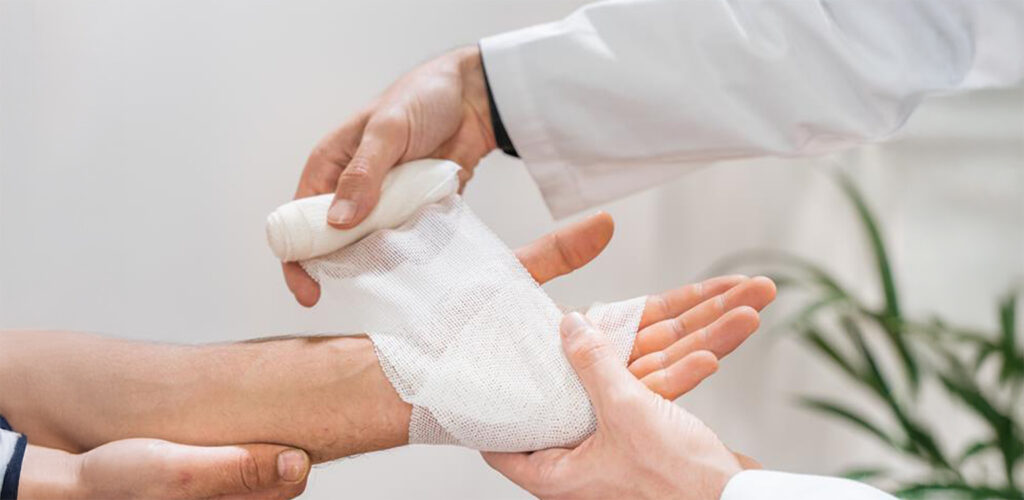Wound Care RCM: Technology That Heals Financial Wounds
Imagine a world where wound care billing strengthens, rather than weakens, a provider’s financial health.
For years, providers in this specialty have been burdened with endless paperwork, coding errors, and unpredictable reimbursements — creating silent financial wounds that erode sustainability and compromise patient access.
At the same time, wound care has become one of the fastest-growing and most lucrative areas in healthcare. High reimbursements and expensive supplies draw providers in, but they also draw massive scrutiny from payers. A claim may be paid today — only to be clawed back tomorrow if documentation isn’t perfect.
But today, technology is transforming revenue cycle management (RCM) in wound care, weaving together accuracy, compliance, efficiency, and financial resilience in ways that were once unimaginable.
Why Wound Care Billing Is So Complex
Wound care is among the most documentation-heavy specialties in healthcare. Treatments for chronic ulcers, diabetic wounds, burns, and post-surgical care often require multiple visits, frequent follow-ups, and detailed clinical notes.
Each service must be documented with precise measurements, photographs, and progress reports to satisfy payer requirements. Providers often believe once a claim is paid, they’re in the clear — only to be hit with an audit later that uncovers incomplete documentation, leading to denials, repayment demands, or catastrophic claw backs.
In wound care, the proper documentation is everything.
The Evolution of Technology in Wound Care RCM
- Electronic Health Records (EHRs): The First Step
EHRs brought a turning point for wound care billing. By capturing wound details and treatment notes in real time, they reduced documentation errors and improved claim submission accuracy. Providers began to see faster, more predictable payment cycles.
- Artificial Intelligence and Clinical Decision Support
The next leap comes with AI. These systems analyze wound data, suggest treatment protocols, and even auto-generate billing codes. By aligning clinical and financial documentation, AI reduces denials, accelerates payments, and flags documentation gaps before they trigger an audit. AI-powered wound imaging tools, for example, can automatically measure wound size and healing progress, feeding precise data directly into the billing workflow. This ensures the clinical and financial story always align.
- Telehealth: Extending Care Beyond the Clinic
Telehealth has unlocked new opportunities for wound care. Providers can evaluate wounds remotely, track healing progress, and adjust care plans without requiring in-person visits every time. These encounters are billable — but only if properly documented and coded. Technology ensures virtual visits are captured, compliant, and audit-ready.
- Unified, Wound-Care-Specific RCM Solutions
Modern RCM solutions, like those offered by HealthRecon Connect, bring all elements — registration, prior authorizations, coding, claims submission, denial management, payment posting, and proactive audit preparation — together in a single, streamlined system tailored specifically for wound care.
Providers gain real-time visibility into every stage of the revenue cycle, reducing denials, preventing claw backs, improving cash flow, and enabling faster, more confident financial decisions. By partnering with experts who understand the nuances of wound care billing, practices can proactively ensure every claim is audit-ready and maximize revenue without compromising patient care.
Overcoming the Barriers
Adopting new technology is not without challenges. Upfront investment, interoperability issues, and staff resistance can all slow progress. On top of that, payer rules evolve constantly, leaving providers struggling to keep up.
One of the biggest pitfalls? Partnering with the wrong people. Generic RCM vendors or EHRs not built for wound care can leave providers exposed. What wound care practices need is a partner that speaks their language, understands payer scrutiny, and proactively audits documentation before claims ever reach an insurer.
Healing Financial Wounds Alongside Clinical Ones
Many providers enter wound care because of the strong financial upside. But without airtight documentation and wound-care-specific RCM processes, that upside can disappear under the weight of denials, claw backs, and audits.
Technology — paired with the right RCM expertise — safeguards the financial promise of wound care. By streamlining documentation, automating coding, and integrating RCM workflows, innovation helps providers maximize revenue and minimize risk while keeping patients at the center of care.

HealthRecon Connect: Wound Care RCM Done Right
At HealthRecon Connect, we don’t apply generic RCM processes to wound care. We bring deep wound-care-specific expertise, proactive auditing, automation, and AI-driven workflows designed to prevent denials, stop claw backs, accelerate payments, and strengthen financial resilience — all while keeping patient care uncompromised.
References
- WCEI (Wound Care Education Institute) – Buzz Report: Wound Management Trends
https://blog.wcei.net/wcei-buzz-report-wound-management-trends - HealthRecon Connect – Why Healthcare C-Suite Executives Prefer Outsourcing Revenue Cycle Management (RCM)
https://www.healthreconconnect.com/why-healthcare-c-suite-executives-prefer-outsourcing-revenue-cycle-management-rcm/

